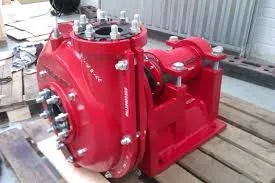English
- Afrikaans
- Albanian
- Amharic
- Arabic
- Armenian
- Azerbaijani
- Basque
- Belarusian
- Bengali
- Bosnian
- Bulgarian
- Catalan
- Cebuano
- Corsican
- Croatian
- Czech
- Danish
- Dutch
- English
- Esperanto
- Estonian
- Finnish
- French
- Frisian
- Galician
- Georgian
- German
- Greek
- Gujarati
- Haitian Creole
- hausa
- hawaiian
- Hebrew
- Hindi
- Miao
- Hungarian
- Icelandic
- igbo
- Indonesian
- irish
- Italian
- Japanese
- Javanese
- Kannada
- kazakh
- Khmer
- Rwandese
- Korean
- Kurdish
- Kyrgyz
- Lao
- Latin
- Latvian
- Lithuanian
- Luxembourgish
- Macedonian
- Malgashi
- Malay
- Malayalam
- Maltese
- Maori
- Marathi
- Mongolian
- Myanmar
- Nepali
- Norwegian
- Norwegian
- Occitan
- Pashto
- Persian
- Polish
- Portuguese
- Punjabi
- Romanian
- Russian
- Samoan
- Scottish Gaelic
- Serbian
- Sesotho
- Shona
- Sindhi
- Sinhala
- Slovak
- Slovenian
- Somali
- Spanish
- Sundanese
- Swahili
- Swedish
- Tagalog
- Tajik
- Tamil
- Tatar
- Telugu
- Thai
- Turkish
- Turkmen
- Ukrainian
- Urdu
- Uighur
- Uzbek
- Vietnamese
- Welsh
- Bantu
- Yiddish
- Yoruba
- Zulu
Telephone: +86 13120555503
Email: frank@cypump.com
Dec . 09, 2024 18:13 Back to list
Efficient Solutions for Sand and Gravel Dredging Pump Technology
The Importance of Sand and Gravel Dredge Pumps in Modern Industry
Sand and gravel dredge pumps play a crucial role in various industries, including construction, mining, and environmental management. These specialized pumps are designed to extract sand and gravel from riverbeds, lakes, and ocean floors, allowing for the efficient collection of these essential materials. As the demand for construction materials continues to rise, understanding the significance of dredge pumps becomes increasingly important.
Functionality and Design
Dredge pumps are specifically engineered to handle abrasive materials and deliver high flow rates while maintaining efficiency. They differ from standard pumps as they are built to withstand harsh conditions and convey mixtures of water and solids with varying densities. Most dredge pumps feature a heavy-duty design with robust impellers and wear-resistant components, ensuring longevity and reliability even in demanding environments.
The operational mechanism of dredge pumps allows them to operate effectively in both submerged and above-water conditions. The suction capabilities enable them to lift sediment from underwater beds while the discharge system propels the material to the desired location, whether it be a processing facility or an onshore dumping site.
Applications in Construction and Mining
In the construction industry, sand and gravel are vital for producing concrete, asphalt, and other building materials. Dredge pumps facilitate the acquisition of these materials through efficient mining processes. In areas where land-based extraction is impractical or insufficient, dredging becomes the most viable solution to meet the ever-growing demand for construction aggregates.
In mining, dredge pumps allow operators to access valuable resources buried beneath water bodies. By enabling the extraction of large quantities of sand and gravel, these pumps contribute significantly to the operational efficiency of mining operations. Furthermore, the materials collected can be processed and sold, often yielding substantial profits.
sand and gravel dredge pumps

Environmental Management and Restoration
Beyond their industrial applications, dredge pumps also play a pivotal role in environmental management. Sediment removal is essential for maintaining water quality and preventing flooding in certain habitats. Dredging helps restore waterways, enabling aquatic life to thrive while mitigating risks posed by sediment buildup.
In coastal regions, dredge pumps are employed to manage beach shorelines and combat erosion. By transporting sediments to eroded areas, these pumps support the restoration of natural landscapes. Moreover, dredging operations can be pivotal in removing contaminants and improving overall ecosystem health.
Technological Advances
Recent advancements in pump technology have significantly improved the efficiency and sustainability of dredge systems. Innovations such as automated control systems, energy-efficient motors, and environmentally friendly designs have increased operational effectiveness while minimizing environmental impact. Furthermore, the integration of monitoring technologies allows operators to track performance and ensure optimal utilization of resources.
Conclusion
Sand and gravel dredge pumps are integral to various industries, providing essential materials for construction and mining while contributing to environmental sustainability. As the world faces increased demands for these resources, continued advancements in dredging technology will be vital to ensure efficient and responsible extraction. Understanding the importance of these pumps and their applications will not only enhance industrial operations but also promote a balanced approach to resource management in the face of environmental challenges. As we look forward to the future, the role of dredge pumps will undoubtedly evolve, underscoring their importance in both industry and environmental stewardship.
-
ISG Series Vertical Pipeline Pump - Chi Yuan Pumps Co., LTD.|Advanced Hydraulic Design&Energy-Efficient Solutions
NewsJul.30,2025
-
ISG Series Vertical Pipeline Pump - Chi Yuan Pumps Co., LTD.
NewsJul.30,2025
-
ISG Series Vertical Pipeline Pump - Chi Yuan Pumps Co., LTD.|energy-efficient fluid handling&industrial durability
NewsJul.30,2025
-
ISG Series Vertical Pipeline Pump - Chi Yuan Pumps | Advanced Engineering&Industrial Efficiency
NewsJul.30,2025
-
ISG Series Pipeline Pump - Chi Yuan Pumps | High Efficiency, Energy Saving
NewsJul.30,2025
-
ISG Series Vertical Pipeline Pump-Chi Yuan Pumps|High Efficiency&Reliable Performance
NewsJul.29,2025










